Tiles on the floor in the corridor: an overview of varieties, design and selection
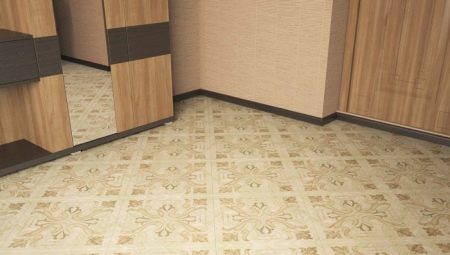
The corridor among all the premises of the apartment experiences the most severe stress - all visitors inevitably pass through it, including the owners, who regularly cross it back and forth, and all the dirt first of all gets there. For this reason, experts advise choosing the most resistant finishing materials in every sense for the hallway, able to withstand abrasion for years, not afraid of mechanical shock and corrosive chemicals, and, of course, attractive looking, because this is the face of the dwelling. More and more people decide to give preference to tiles.
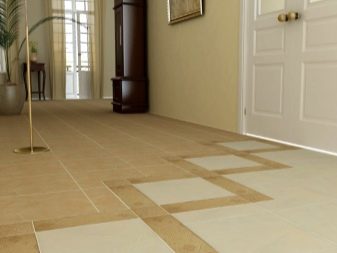

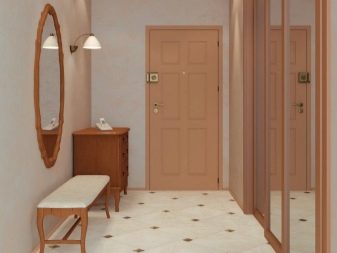
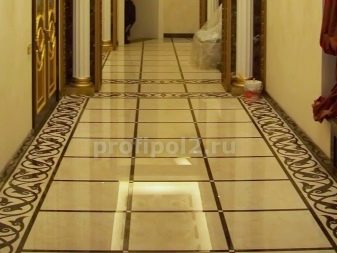
Peculiarities
When considering purchasing just such a cladding in the hallway, you must objectively assess how it will fit into the interior and whether it will be sufficiently justified in terms of operation. So that you don't miss anything, we've compiled the potential advantages and disadvantages of a tiled floor. Let's start with a list of positive qualities.
- Strength and durability. Tile is considered one of the most durable and reliable materials; its service life is usually estimated at several decades. In the conditions of the corridor, the load on it will be higher, but if you choose the appropriate type of material, you can not do the repair for a long time.
- Fire resistance. Regardless of what material the tile is made of, it certainly does not burn. Recently, our fellow citizens are increasingly abandoning central heating in favor of underfloor heating systems, and for this structure it is very desirable that the floor be made of non-combustible material.
- Ease of maintenance. The good thing about the tile is that there are practically no pores in its structure, and therefore it does not absorb any visible pollution or odors. If the stain does appear, then it remains outside and it is quite easy to wipe it off with a simple rag, and in which case the coating is not afraid of chemical cleaning agents. Due to the waterproof structure, such a floor also does not contribute to the growth of mold.
- Ease of repair. The big advantage of floor tiles is their fragmentation. Even if one of the fragments is damaged or broken, this does not mean that you will have to completely change the entire floor in the hallway - you can get a spare element from the old stocks and install it instead of the damaged one.
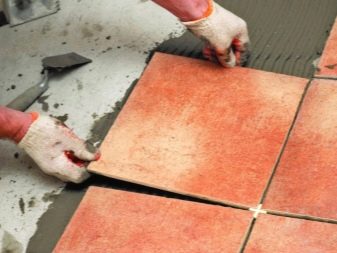

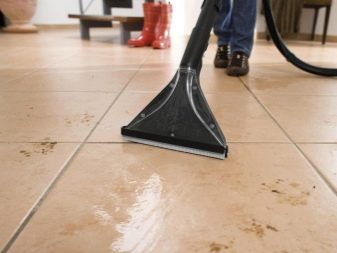

Unfortunately, no building material in the world is perfect. Tiles have their drawbacks..
- Many consumers want to further brighten the corridor with glossy floor tiles, but its use is undesirable because it has a high slip rate. In order to avoid injury, it is better to give preference to matte solutions.
- The tile is often praised for the fact that it does not get dirty for a long time, but here everything is relative, depending on which variety to choose. So, on the light finish of the floor in the corridor, small debris and dirt will be perfectly visible, and the embossed coating will help to ensure that unwanted elements accumulate in the hollows where the rag does not reach. Accordingly, such cladding options should be avoided in the hallway.
- The tile itself cools down very quickly and almost always remains cool, especially since the corridor is shaded all the time, is not warmed up by the sun's rays and does not have its own radiator batteries. If the owners are used to walking around the apartment barefoot, they will either have to give up this habit, at least within the boundaries of the hallway, or get used to the constant feeling of cold.
- Tiles are not a finish that provides good sound insulation, and if you also wear heavy shoes, neighbors will not be happy with your choice of flooring.
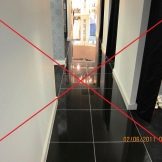



Species overview
Considering installation on the floor, and even in the hallway - where the load will definitely not be easy - the tile should have improved characteristics in terms of stability and durability. In fact, only three main types of such cladding are suitable for use in the described conditions.
- Classic ceramic tiles almost entirely consists of ordinary baked clay. This is an old technology that does not require any special resources for production, therefore it is this type of tile that should be considered the cheapest.
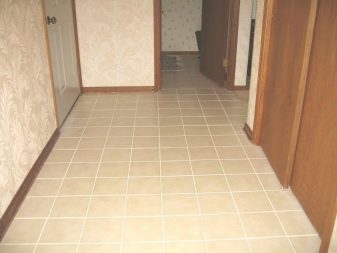
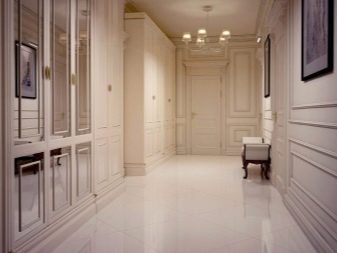

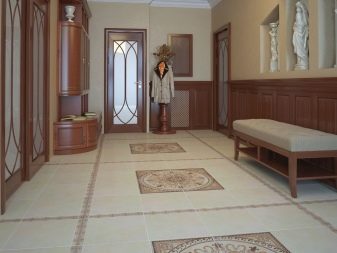
The advantages include color fastness, but today there are much more durable alternatives to old tiles.
- Porcelain stoneware - it's all the same clay as a base, but with the addition of granite chips. Due to the special pressing technology, the resulting material is approximately equal to natural granite in strength, which means that it is much more reliable and durable than tiles, and it passes water to an even lesser extent. Moreover, in terms of design, it quite often plausibly imitates just real granite.
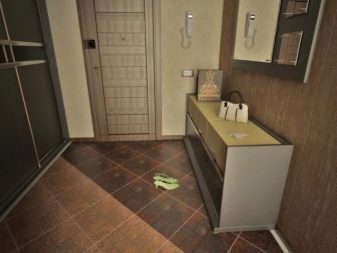
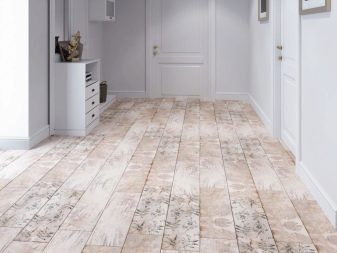
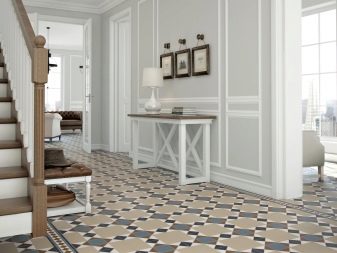

- Quartz vinyl tiles is the result of crossing natural and artificial materials - quartz sand is bonded here with polyvinyl chloride. In fact, this is an artificial stone, which is cheaper than natural, but in terms of durability and resistance to abrasion, in some cases it is even able to give odds to its natural counterpart.
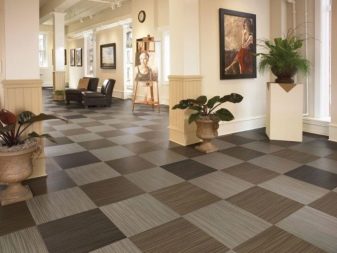
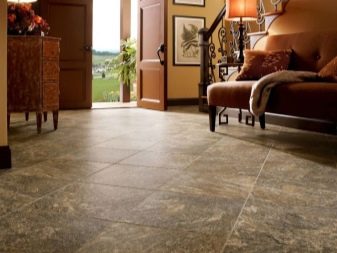

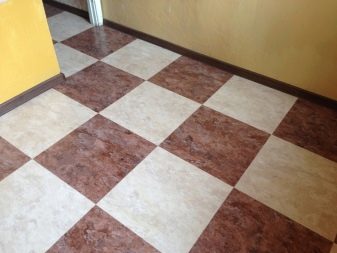
Variety of shapes and sizes
Modern manufacturers offer the consumer a choice of products of completely different shapes and sizes. Dimensions matter - the larger each individual fragment, the easier and faster it will turn out to cover the corridor floor with tiles. At the same time, there is also an opposite pattern - in pursuit of large tiles, one should be guided by the fact that the dimensions of the room are multiples of the dimensions of the tile, otherwise trimming will take a lot of time and effort, and even turn a significant part of the finishing material into waste.

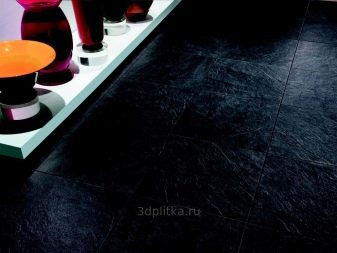
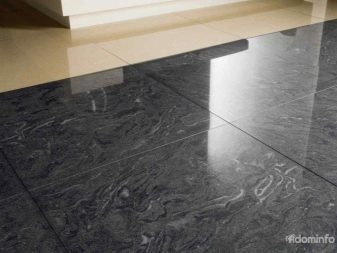
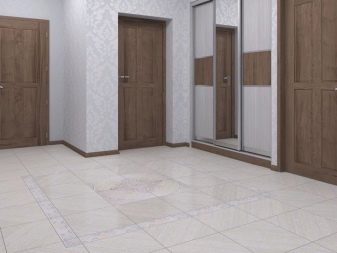
Most often, tiles of a conditional medium size are chosen, since a large one gives too much debris, and a small mosaic in a spacious corridor will seem inappropriate.
Another selection criterion is shape of products. It is considered a classic square, able to easily fit into a typical rectangular room, but also fragments elongated shape are also in demand. With their help, by the way, you can influence the visual perception of the room by laying the tiles with the shorter end to the wall that you would like to lengthen. At the same time, more original geometric solutions come across, for example, hexagons, from which you can lay out the "honeycomb".
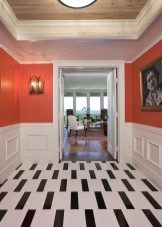
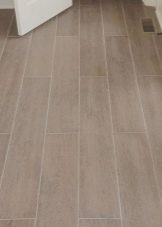
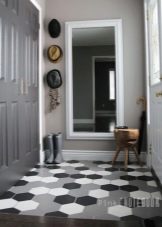

Design options
The corridor is that part of the apartment that absolutely everyone will see, even if they are not guests, but just a person who for some reason rang the doorbell. Since your own reputation must be maintained at a consistently high level, when choosing a floor finish for a hallway, an aspect such as design cannot be ignored.
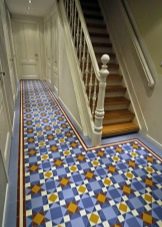
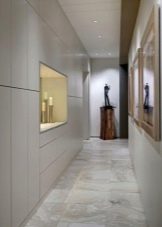

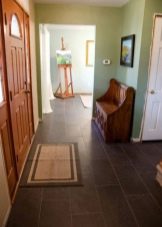
Color palette
One of the most important selection criteria is the color of the coating - it is important that it is in harmony with the design of the room as a whole and does not interfere with its adequate perception. You can use any solid color option, but tiles of the following colors are more often used.
- White. Here the choice is difficult: on the one hand, the shiny white gloss would not interfere with the room, which is usually not spoiled by its own windows, on the other hand, it turns out to be too slippery and traumatic. In addition, dirt brought from the street will be visible on any light finish of the floor in the corridor.
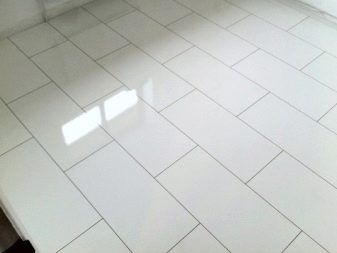

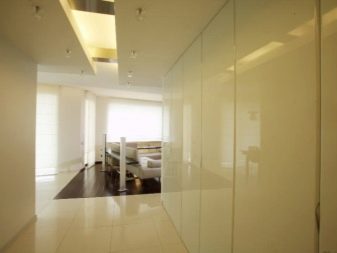
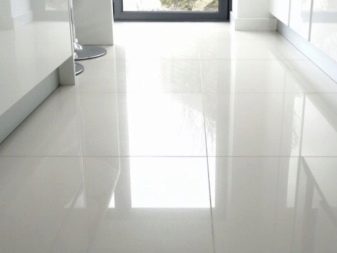
- Black. The opposite of white is also not without contradictions: on the one hand, such a design looks very elegant, on the other hand, damage is clearly visible on it, and a visual narrowing of space is inevitable, which is not always good. With all that said, black tiles are usually used in combination with white, laying out a characteristic checkerboard pattern.
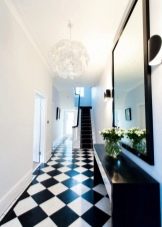

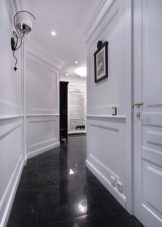
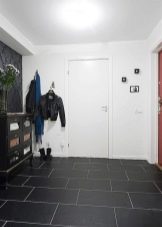
- Gray... The golden mean turns out to be the most practical in the case of the hallway - scratches and dirt are not so noticeable on it, while it does not visually reduce the space.
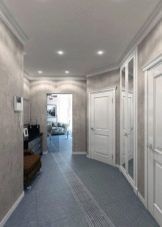

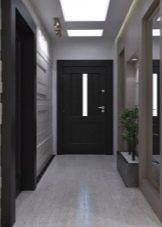
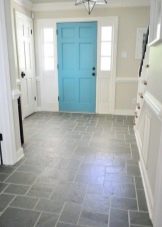
- Beige. Another option that allows you to neutralize the main disadvantages of a white or black coating, and at the same time has a warmer tone. This is an inconspicuous floor - it is not striking, neatly complementing all the other interior details.
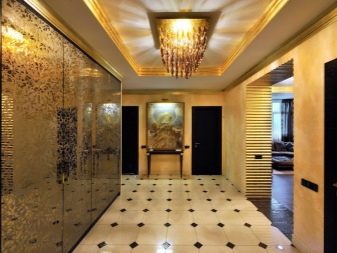
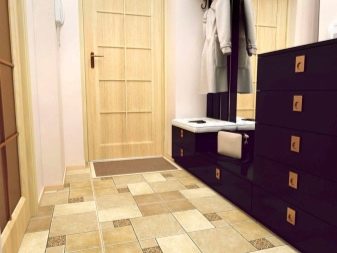
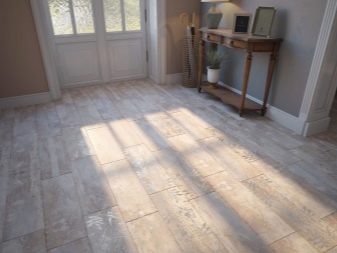
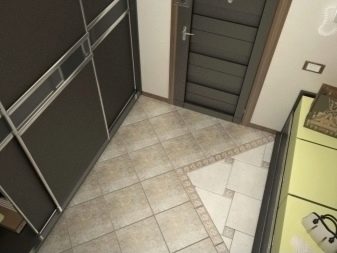
- Bright colors. Colorful solutions in the form of blue or red tiles are relatively rare, but in general it is difficult to link them with the general interior design, therefore such a floor is rarely monochromatic. In order not to tire the eyes, the cladding is usually combined with white in a variety of patterns, or at least muted shades are chosen.
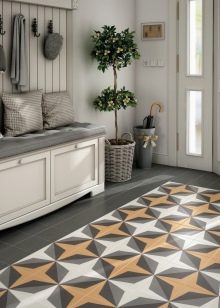
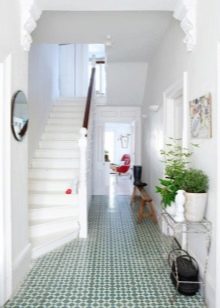

Patterns and drawings
Modern industrial technologies allow tile manufacturers to meet the consumer in terms of the range of available patterns. They can be anything, so it is not at all necessary to choose strict monochromatic solutions.
A prime example of how this can be used in modern design is a way of laying out called patchwork. Translated from English, this word means "something sewn from shreds", therefore, tiles are used for cladding, selected at random: it has the same color scheme of the ornament or the ornament itself, but not both of these characteristics at once. There is no need to adhere to any pattern for laying out the pattern - on the contrary, it should be avoided by laying out the tiles in the most disordered sequence.
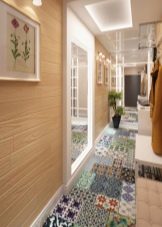
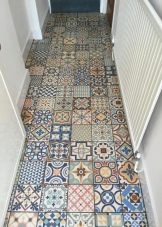
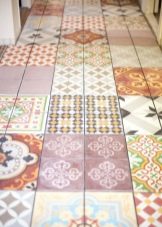
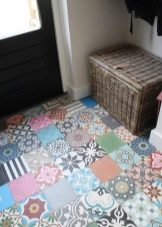
It turns out stylishly and very home-like, and most importantly - unique.
Are very popular coatings imitating natural wood, whether it be parquet or laminate... In a corridor, a real such material would hardly have lasted long enough, and so you have the opportunity to choose a finish for your own aesthetic reasons, without thinking about the practicality of such a solution. Manufacturers are not lazy to offer different shades of wood, including imitation of aged cladding.
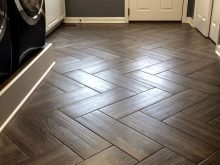
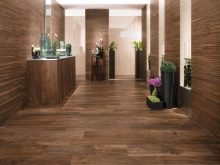

Naturally, it is in demand and marble effect tiles, especially since it can really include stone chips. As in the case of imitation wood, this design solution looks very stylish and expensive, and although theoretically you could actually line the hallway with natural stone, the tiles will cost significantly less.
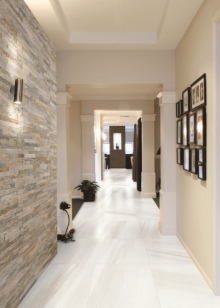
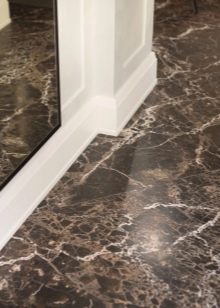
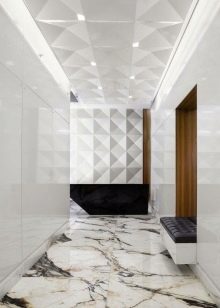
As with wood, there is a choice of shades.
Texture
Since tile manufacturers undertake to imitate certain natural materials, it would be naive to believe that in pursuit of this they limit themselves to imitating only one shade. In fact, modern technologies also cope with the creation of a certain texture. Let's not talk about how similar the result is to natural stone or wood. Let's just say that the surface of the tile can be either smooth or rough.
The smooth texture has an obvious advantage in the sense that it does not imply hard-to-reach places - walking on it with an ordinary rag, the owners will achieve perfect cleanliness without any extra effort. This is a big plus for the hygiene of the room, but a perfectly flat surface is often excessively shiny and dazzling, and it also turns out to be slippery, which is fraught with injury.
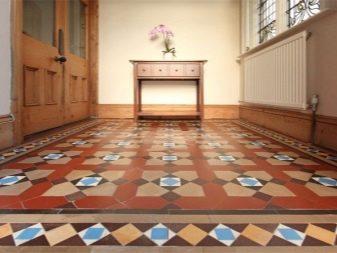
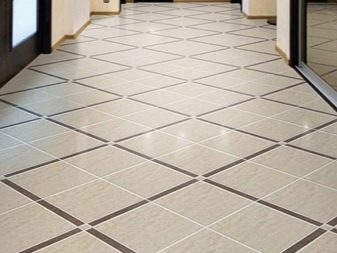
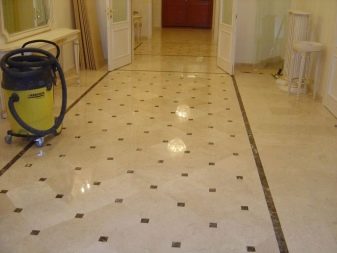
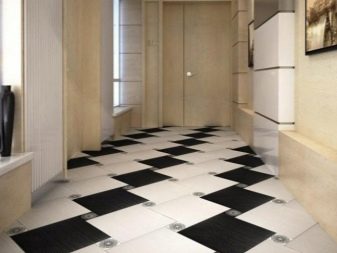
Accordingly, a rough surface has completely opposite advantages and disadvantages. Most often, these are matte tiles, on which it is difficult to slip - small embossed protrusions, which you may not even notice from your height, prevent the shoes from slipping.
Nevertheless, these same ridges and depressions create a certain problem - in all these features of the relief, dirt and bacteria can accumulate, which is not so easy to extract from there. On rough tiles, dirt may not be so noticeable at first, but in fact the finish gets dirty a little faster than glossy and needs to be cleaned more often.
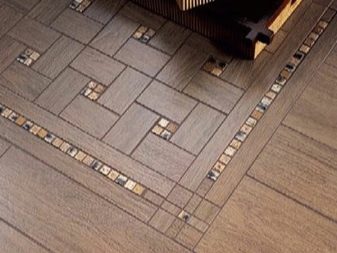


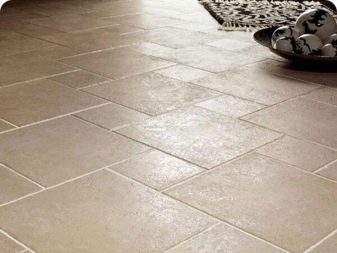
However, in pursuit of the naturalness of the cladding that imitates natural materials, many buyers still acquire just such a variety.
Criterias of choice
Consider a few more secrets, knowledge of which will not interfere with the selection process. First of all, the tile is chosen as a material that can withstand wiping, but at the same time the tiles are different and you should not think that any tile covering is the same in this regard.
Experts have purposefully developed a special scale by which it is possible to determine how quickly the floor tiles wear out, and the corresponding marking must be present on the packaging. Considering that the passability in the corridor is the highest on the scale of the entire apartment, it is worth choosing products of 3-4 class of abrasion.
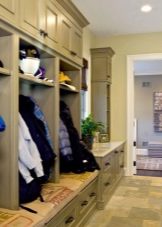



In the meantime, no matter how hard you try with choosing the least wipeable tile, eternal finishing materials do not exist, because the tiles will wear out sooner or later. The task of a good owner is to make the natural aging process of the tile as less conspicuous as possible, therefore professional designers often use a somewhat illogical move - they cover the floor of the corridor with tiles that initially imitate the old coating.
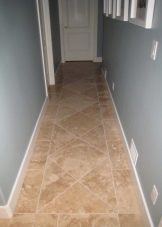
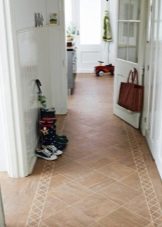
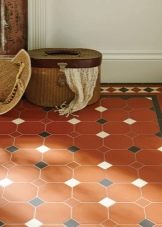
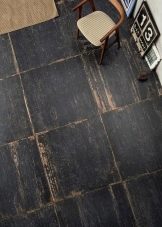
If the manufacturer has managed to achieve the effect when the stylization for the old finish does not interfere with the understanding that in fact the cladding is new, then even in the case of real wear, a person will still perceive it only as an element of a well-thought-out design.
For the same reason experts discourage choosing tiles of light shades and with complex patterns for the corridor - a slightly darker palette with indistinct, half-blurred stripes will turn out to be much more durable. No matter how intensively such a coating is wiped off, it will always seem to an outsider who did not have the opportunity to constantly monitor the condition of the floor that the coating was originally conceived exactly as it looks now and that all visible scuffs are a design feature.
A separate conversation is about choosing a tile manufacturer... In most cases, consumers evaluate a supplier for the reliability and durability of its products, tested by millions of other consumers, but in the case of tiles, it is worth paying attention to one more subtlety - the degree of strictness of the geometry. Unfortunately, even among the top brands, not everyone is able to achieve the perfect correctness of the shape of individual elements, which can lead to uneven seams.
If you also chose a tile of a large size, slight curvatures of half a degree will be clearly visibleespecially when designed with a minimum joint width. You can try to avoid this problem in two ways: either by diligently studying the reviews and finding a company that was not criticized for "three in geometry", or by choosing a grout for the joints to match the tile itself, so that one does not stand out from the other.

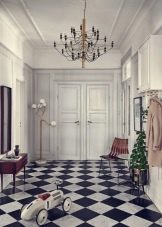

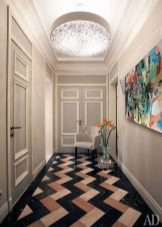
Laying methods
There are four main layouts, and although the imagination of designers is not limited to them, you will most likely like one of them.
- Classic layout doesn't look for complicated paths - rectangular tiles are laid out in even rows along the walls. It looks simple and at the same time solid and solid, in terms of saving tiles and time, this is the best option.
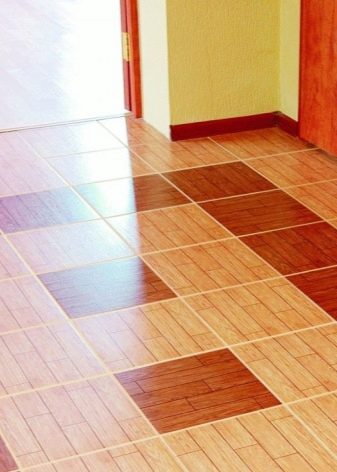
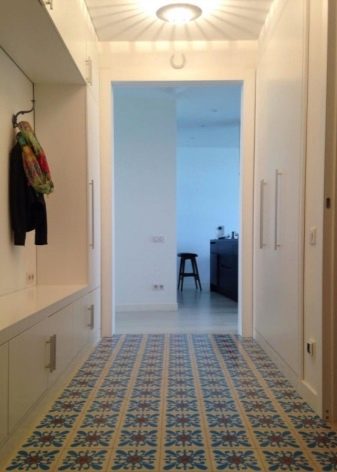
- Diagonal layout - this is the same classic, but at an angle of 45 degrees in relation to the walls, so that each fragment looks like a rhombus rather than a rectangle. With the help of such a trick, it is possible to make the hallway more aesthetically interesting, visually expand its boundaries and even hide some irregularities in the substrate, but the consumption of materials and time turns out to be much higher.

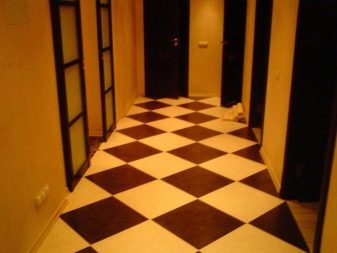
- Spreading out resembles the classical one in the sense that the rows are located at right angles to the walls, but at the same time there is a certain displacement in them in relation to each other. Something similar can be seen in brickwork, where the rows need to be tied, and this decorating technique is used precisely to imitate natural materials.
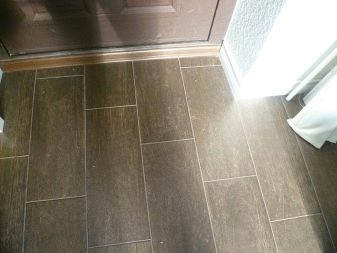
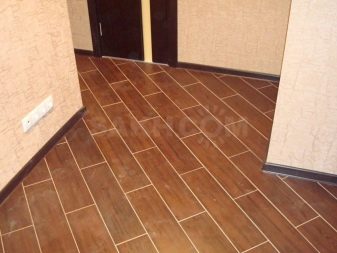
- Herringbone layout usually relevant for imitation of parquet, when each individual fragment is a narrow and highly elongated rectangle. This solution looks both simple and original. At the same time, relatively little waste remains.
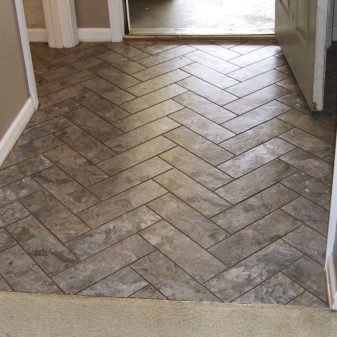

When deciding on a styling method, it is worth remembering that you do not have to strictly adhere to any one chosen scheme, especially if the corridor has a shape that is significantly different from the classic rectangle. So, in a narrow vestibule at the entrance, you can choose one of the above-described layout methods, and lay out a full-fledged panel of small mosaics in the central part - this combination will definitely be remembered by guests and will say a lot about your aesthetic taste.
At the same time, you can combine ideas at your own discretion and in any combination, as long as it is beautiful.


Beautiful examples
Even tiles with a simple black and white pattern can help create the perfect hallway interior, especially if you do not use it on its own, but in combination with a frame from another tile in the same colors. The result looks very aristocratic and is well remembered. The designer deserves all kinds of praise: focusing on the classic black and white color scheme, he successfully moved away from the triviality like a checkerboard.
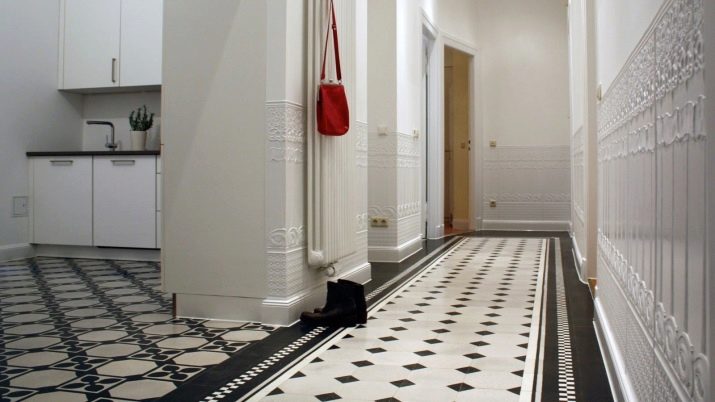
This example clearly shows that for a good tile-maker, the number of layout options is by no means limited to four.He is capable of more. As a result the complex pattern of the corridor floor resembles a laminate, however, in this case, replacing the floor covering will not be needed very soon, because a good tile can serve the owners for decades.
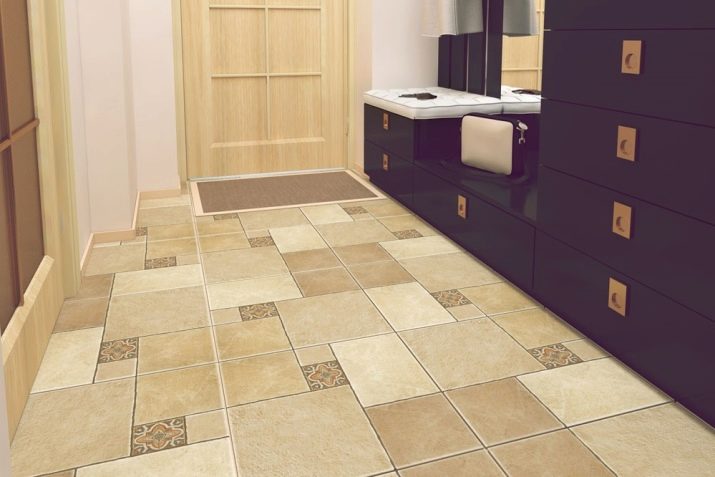
If you have always dreamed of parquet in the hallway, but objectively understand that this expensive cladding will not last long there, choose a tiled imitation of parquet boards. For skeptics who do not believe that this might look believable, this is an example of how things could have been. In addition, it is also a successful demonstration of a combination of two display methods within the same room.

For information on what errors exist when laying tiles, see the next video.

